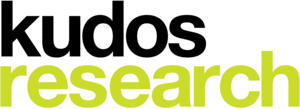What’s the cowbell of the market research industry? This unlikely question came to me as I was reading an old issue of the New Yorker in my dentist’s office several weeks ago. The magazine contained a brilliant piece by musicologist Alex Ross on how changing technology has favoured some sounds over others. “Classical music,” he wrote, “which had been the mainstay of the 19th century, had a hard time gaining a foothold in the new terrain of the phonograph, which from the start favoured brassy signing, knife-edged winds and brass, the thump of percussion – whatever could best puncture surface noise. The age of the cowbell had begun.”
“The ‘surveys’ of the coming era will be as different from those deployed today as movies are to stage plays”
In music, as in every sector, changing technology creates new winners and losers. For market research, the current ascendancy of internet and mobile devices makes this fact especially apt. Part of this is due to simple economics, but a bigger part is due to the coming revolution in survey measurement techniques. The ‘surveys’ of the coming era will be as different from those deployed today as movies are to stage plays.
I’ve operated research businesses during four major recessions, starting with the economic mess of the early 1980s. During the first three of these the research industry did remarkably well. Why? Because a slowdown in demand forced companies to think smarter about capturing the attention and wallets of wary consumers, and that usually meant research spending was left untouched. What’s different about the current recession is that many parts of the research industry are really suffering. Is there something else stirring this time around that may have longer-lasting effects on the industry?
On the clientside there’s a lot of talk about huge spending cuts. The result is a serious rethinking of once-sacred programmes in areas such as brand tracking and advertising evaluation. As one prominent US client told me recently, “The free-spending times are long gone, never to return.” That may be so, but there’s gathering evidence that these cuts in spending are not being matched by reductions in research volume. That’s because the bigger story that’s starting to play out is the same one we have seen in other areas of the information sector: the cost of obtaining data is in free fall. Just as the latest hit songs can be acquired for a few cents (or even for free) and email services such as GMail and Hotmail give users Gigs of data storage for nothing, vast territories of the survey research sector are also starting to have costs close to zero.
When I conducted my first survey 40 years ago, getting people to cooperate wasn’t much of an issue, but putting a survey in front of them was expensive. Today the opposite is the case. Two major shifts in the industry are helping solve this problem and exploit the distribution advantages of the internet.
The first involves custom online panels. This phenomenon has been gathering momentum throughout the current decade because it provides clients with access to ‘voice of the customer’ research at a cost that, with volume, is a tiny fraction of that associated with conventional telephone research – and significantly lower than that associated with access panels. With custom online panels, top-level decision-makers are exposed to something that has often been lacking from traditional research: studies that are good, fast and cheap.
“USA Today and LinkedIn are already selling samples – and it’s only a matter of time before the likes of Facebook, YouTube and even Google get in on the act”
The second shift involves significant changes in the cost and quality of general market surveys. That’s because the availability of research participants and panellists is increasing exponentially as players outside the boundaries of what we think of as ‘market research suppliers’ start to jump into the field. Behind the façade of merger and acquisition activity surrounding some of the global panel companies like e-Rewards, Research Now and Toluna, the bigger story is the entry of old and new media organisations into the lucrative access panel business. USA Today and LinkedIn are already selling samples – and it’s only a matter of time before the likes of Facebook, YouTube and even Google get in on the act.
These latter organisations have access to hundreds of millions of loyal consumers worldwide. Monetising this relationship through huge global panels could result in sharp drops to the cost of most categories of survey respondents, because the cost of recruitment would be minimal.
The most exciting new development from the chaos and carnage associated with the current recession is that clients are starting to grasp the transformative power of the internet to deliver entirely new experiences to respondents. Simulated shopping, mobile-based customer sat, virtual wallets and online communities each represent new forms and approaches competing for the dollars and attention of this new era. As respondents taste surveys that are actually fun and engaging to answer, the dreaded radio button will fade into history.
It’s difficult to predict exactly what the market research industry will look like a decade from now, but it’s a safe bet that, like the age of the cowbell, there will be a different rhythm and feel to that which we have known in the past. Though the elements that make up this great transformation have been around for several years, future historians of our little industry will look back at the current recession as the spark that ignited a revolution.
This is an edited version of an article from our supplement on online research, which will appear with the December issue of Research.








5 Comments
Simon Chadwick
15 years ago
Bravo, Angus! Just what some of us have been saying for a few years now. But the key thing will be: how reliable will the information be? The challenge in front of us is not only how to be players in the new game but also how to ensure that standards of reliability and accuracy are baked in to the new research. Otherwise, we might be like the steam car coming after the horse and buggy - a great leap forward of no consequence.
Like Reply Report
Charles Pearson
15 years ago
I agree with Angus, particularly the first major shift he identifies as the growth of custom online panels. I have observed and personally experienced several panel companies dabbling with this product offering since 1999 with very few successfully growing, supporting and investing in this capability. I believe its time has come in 2009 and beyond as certain companies have formed with this sole focus in mind and are creating and applying innovative ways to make these custom panels more useful and cost effective for clients. If you are interested in talking further about how EasyInsites is doing this, please contact me at charles@EasyInsites.com.
Like Reply Report
Alastair Gordon
15 years ago
Totally agree Angus, the traditional ad hoc research approach is under extreme threat. (See my posts on: "Are Surveys Heading For Extinction?" at http://wp.me/pBmtI-2i). But, for a variety of reasons before the revolution, I'm picking a short-term surge in "old-style" surveys and research. This is because (a) the "new MR" techniques are still under-developed/productised, (b) clients need post-recession data and have deferred many vital studies, and (c) growth in Asian markets will be huge and old-school surveys remain easier to implement in many such markets. I pick this temporary resurgence will fool some MR cos., and the less forward thinking ones will fail to take the lessons you point out into account -- and will suffer accordingly a few years down the track.
Like Reply Report
Chris Forbes
15 years ago
Most of the focus of the discussion on how the on-line world is changing research focuses on the supply side- how to access and collect survey data. There are also seismic changes occurring on the demand side that go beyond simple changes in clients research budgets: - Clients are now accessing research through the browser long after the final presentation is finished - Outputs from a project are being combined with outputs from other projects and other information "feeds" to make decisions - Data sets are being combined and interrogated to find new insights Most competitors in the marketing information space are responding to changes in the way their content is now being consumed, but the research community still seems to be fixated on data collection. Strange.
Like Reply Report
John Pillsbury
15 years ago
Yes, the revolution of Internet and online (or mobile) research is moving rapidly from cheap mass data collection, to; 1. Free Mass data collection, eg. Chris Anderson's "FREE, the Future of Radical Price", or 2. Smart, Innovative, new value driven Research approaches, that give even greater insight. Technological systems will greatly help research "assemble and diagnose from the chaos, real intelligent Market research results..and marketing to customer solutions. Just as MRIs and advanced lab equipment, help the doctor give better treatments to patients, likewise new MR technologies must be a tool, and not a substitute for us as MR professionals. Let's make old technology obsolete, and new technology our platform for greater value to clients.
Like Reply Report